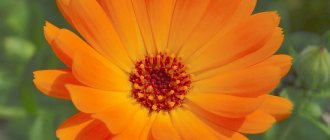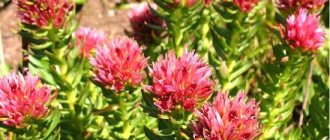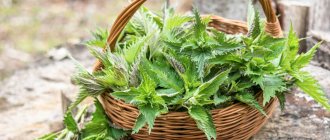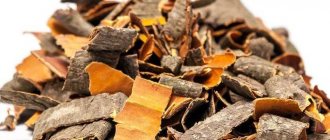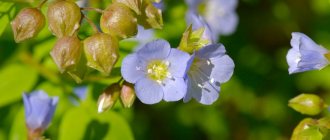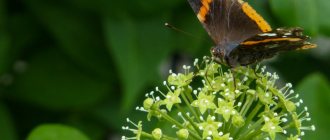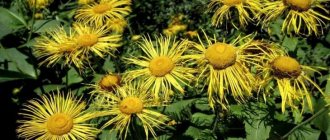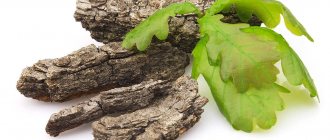This is a perennial herbaceous plant of the Crassulaceae family. Other names for Kalanchoe are bryophyllum, indoor ginseng, Goethe flower, tree of life, home healer, surgeon without a knife, etc. Some of its varieties grow well at home, delighting with beautiful flowers and providing healing assistance. The plant has a bacterial, anti-inflammatory, wound-healing and hemostatic effect. Its juice has a detrimental effect on polio and influenza viruses. Kalanchoe medicinal is successfully used in dentistry, surgery, gynecology, gastroenterology and dermatology.
About the plant
The genus Kalanchoe belongs to the Crassulaceae family, which includes more than 200 species of annual and perennial herbaceous plants. Most of them belong to succulents - plants that have special tissues for storing water and grow in dry areas. The most famous succulents include cactus and aloe.
Most species grow in tropical climates. They can be found in Africa, South America, Southeast Asia, and Australia. Some common home-grown species are native to Madagascar.
The genus name Kalanchoe is a French phonetic transcription of the Chinese "Kalan Chauhuy", which means "falling and growing" in Chinese. This name was given because of the reproduction characteristics of some plants. They are viviparous - daughter shoots are formed on the mother plant and, falling to the ground, immediately germinate, since they already have developed roots - this is clearly visible in the photo.
Kalanchoes can have a height from a few centimeters to 4 meters. Propagated by seeds, hatching buds or cuttings. It is grown as an indoor, decorative flower or medicinal plant.
Compound
Due to their rich chemical composition, some types of Kalanchoe are actively used for medicinal purposes. Healing flower contains:
- flavonoids;
- enzymes;
- vitamins;
- macro- and microelements;
- organic acids;
- essential oils;
- glycosides;
- tannins;
- lipid compounds.
The flower is used not only in alternative medicine. Currently, traditional medicine produces pharmacological agents from Kalanchoe and, at the same time, conducts active research to study the beneficial properties of the plant on human health.
Kalanchoe: home care
To grow a miracle flower at home, it is important to take into account some rules.
Basic lighting requirements
Kalanchoe needs good lighting. From morning until two o'clock in the afternoon, you need to maintain bright light (for example, keep a flower on the windowsill). After lunch, there is no need for such intense lighting, so you can move the flower to a darker place. In winter, Kalanchoe needs more light, so the plant is best placed on a windowsill on the south side of the house.
Temperature
Kalanchoe itself feels best at 17-19 °C, but even if the temperature in the room drops to 5-6 °C, this will not affect the condition of the flower.
Important! What you definitely need to protect it from is heat. At high temperatures, it tries to absorb more moisture, which can cause various diseases or rotting.
How to water an indoor flower
As already mentioned, excess moisture is detrimental to the flower. It's best to just water it with cool water. When watering, you need to avoid getting water on the surface of the stems and leaves, this leads to their rotting. Water sparingly to keep the soil moist but not waterlogged.
The watering procedure should be repeated on average once a week. Use cool, settled water.
Due to the fact that the plant accumulates a lot of moisture in its leaves, it can easily tolerate short periods of drought. At the same time, Kalanchoe categorically does not tolerate high humidity. In winter and autumn, watering is carried out half as often.
Important! Dusty leaves should simply be wiped with a slightly damp cloth. It is also necessary to remove wilted inflorescences and diseased leaves that begin to curl, turn yellow and dry out, otherwise the flowers may begin to fall off.
Kalanchoe can be propagated. To do this, in May or June, the tops of the shoots are transplanted into a mixture of sand and clay. Young shoots that appear after removing old inflorescences are well suited for seedlings.
Kalanchoe medicinal flower is a very useful plant that will help with many diseases and their prevention. In addition, some of its species produce beautiful flowering and will be a good decoration for the home. Medicinal Kalanchoe, care for which at home is easy and simple, unpretentious. In response to care, the flower will purify the air in the room, and its juice will be rich in various microelements. What does Kalanchoe treat? Almost everything, this is its uniqueness.
Kinds
More than 200 different species of Kalanchoe are known. Often they also include the closely related genus “Bryophyllum”, or “Bryophyllum”, consisting of 47 species. The most common ones for growing at home are:
- Kalanchoe blossfeldian - Blossfeld. Plant up to 30 cm high. Homeland - Madagascar. A little-studied species.
- Kalanchoe daigremontiana - Degremona. Also a Madagascan species, reaching half a meter in height.
- Kalanchoe pinnata - Kalanchoe pinnata. The most studied species. Can reach 2 m in height.
All of the above types of Kalanchoe are used for medicinal purposes. Kalanchoe Kalandiv, a miniature species often called a “flower bed in a pot,” is now increasingly popular as an ornamental plant.
Which ones are healthier?
Among the common types of Kalanchoe, traditional medicine has studied well and uses only two in medical practice:
- Degremona is a culture that appears more often than others in alternative medicine recipes. Traditional doctors also do not ignore this plant. As a result of their research, it was proven that the use of Kalanchoe Degremona extract has a positive effect in the treatment of breast cancer.
- Cirrus is the most studied species of Kalanchoe by science. In traditional medicine it is used to treat infections, inflammation, rheumatism. In some countries it is used to treat hypertension and urolithiasis. The juice of the plant is also used in surgery, dentistry and obstetrics as an anti-inflammatory and wound-healing agent.
It is difficult to say unequivocally which type of Kalanchoe is most useful. However, in medicinal practice it is recommended to use plants that are better studied by science, and these include only Kalanchoe “Cirrus” and “Degremona”.
Reproduction
The plant can be propagated by several methods:
- Cuttings
- Leaf
- Seeds
Below is a detailed description of each plant propagation method.
Cuttings
This method can be carried out at any time of the year. In order to get cuttings, you need to trim the shoots after flowering. After the cuttings are cut, the lower leaves should be removed and the shoots should be left to dry for 2 days. Next, you need to place the cutting in water at room temperature. After the first roots have appeared, the cuttings can be planted in the ground.
When the shoots are completely rooted in the soil, it is necessary to pinch, through which the shape of the future bush is formed.
Leaf
Reproduction by leaf blades can take place at any time of the year. First you need to cut off the leaf and plant it in a small container with fertile, moist soil. After this, the leaf should be covered with a jar or glass. Over the course of several days, the leaf takes root in the soil and a new plant begins to form from it.
Often, for propagation in this way, not a whole leaf is used, but only a part of the blade.
Seeds
As a rule, this type of propagation is done in the spring. The seeds are planted in moist soil and pressed down slightly with your fingers. The top soil must be sprayed with water and covered with glass or film. Periodically, the pot with seeds should be ventilated and re-sprayed. After the first shoots appear, the glass or film must be removed. Next, the plants are transplanted into separate pots.
Transfer
It is recommended to replant young Kalanchoes every year. For older flowers, once every few years will be enough. Replanting should be done after flowering has ended.
First you need to buy soil for succulents or make it yourself. The plant must be removed from the previous pot carefully so as not to damage the roots. The procedure will be easier if you first water the flower with water. Afterwards, the lump of earth along with the roots is placed in a new pot on the prepared drainage layer. The remaining void is filled with soil. Then the Kalanchoe should be watered.
Beneficial features
All the healing power of the plant is contained in its fleshy leaves. They contain the largest amount of useful substances, thanks to which the plant has the following healing properties:
- antiseptic;
- anti-inflammatory;
- wound healing;
- immunomodulatory;
- hemostatic;
- antiviral;
- hypotensive – lowering blood pressure;
- sedative;
- painkillers.
Also, the beneficial properties of Kalanchoe have found their application in detoxifying the body - removing toxins (the plant has a mild diuretic and choleretic effect).
What does it help with?
The plant is used to treat a number of diseases. It is recommended to use the plant for the treatment of the following pathologies:
- skin diseases: wounds, abrasions, burns, frostbite, polyps - polyposis, warts, ulcers, bedsores, trophic ulcers;
- oral diseases: stomatitis, bleeding gums, gingivitis, toothache and sore throat;
- colds: acute respiratory viral infections, acute respiratory infections, runny nose, cough, otitis media, rhinitis, sinusitis;
- joint diseases;
- blurred vision;
- varicose veins or varicose veins;
- hemorrhoids;
- gastrointestinal pathologies: peptic ulcer, stomach and intestinal disorders.
The plant can also be used in cosmetology to improve the condition of skin and hair.
Recipes
Alternative medicine knows many recipes for cooking from Kalanchoe. The plant can be consumed fresh, but can also be used to make medicinal products in the form of juice, tinctures and infusions.
Juicing
For preparation, it is recommended to first place the collected leaves in the refrigerator for one week to soften. This makes it easier to extract juice from plant materials.
After the leaves have become softer, they should be crushed in any convenient way: crush in a mortar, grind in a meat grinder. The juice is squeezed out from the resulting mixture using gauze. Store the finished product in the refrigerator for no more than 2 weeks. Therefore, it is not recommended to prepare the mixture in large quantities.
For long-term storage, the juice is mixed with medical alcohol:
- 1 part – alcohol;
- 5 parts – juice.
In this form, the juice can be stored for about a year without losing its beneficial properties. To maintain immunity and treat diseases of the gastrointestinal tract, it is recommended to take 1 tsp. product, during meals, three times a day. You can add honey to improve the taste. The course of treatment is 2 weeks, then you should take a break for the same period.
Vodka tincture
The use of Kalanchoe tincture with vodka has contraindications due to its alcohol content. However, it is one of the effective remedies recommended for treating acne and treating wounds. When treating wounds or ulcers, the product is applied to the affected area using a cotton swab.
Flower meaning
The name Kalanchoe literally translates from Chinese as “what falls, grows.” It is also called the “tree of life”, “room doctor”, “homemade ginseng” due to its high content of nutrients, vitamins, trace elements and minerals.
Kalanchoe is unpretentious, consumes little water, and can grow in any conditions. Therefore, “Kalanchoe” means endurance, durability and strength. It is given to purposeful and persistent people who achieve success in any business.
In China, it is customary to give Kalanchoe in pots as gifts for Chinese New Year. This means that you wish the person prosperity, well-being and wealth.
According to signs, Kalanchoe absorbs negative energy and protects the family from gossip, quarrels and evil spirits. It charges the home atmosphere with calm, harmony, and comfort.
It is recommended to keep the flower in places where household members spend more time together.
Cut flowers mean affection. In a bouquet, their meaning depends on the color:
- Reds represent love, a strong and strong feeling;
- White and pink - innocence, sympathy, romance;
- Yellow and orange represent good humor and friendship;
- Purple and blue - quite rare - are universal. Using them in a wedding composition, they can highlight the color of the bride’s dress. They can be given as a compliment on the first date.
Contraindications
Despite all the benefits of the flower, the use of Kalanchoe for medicinal purposes has limitations. If it is practically safe as an external agent, then ingestion can be harmful. It is not recommended to use the plant for:
- presence of allergies;
- pregnancy;
- breastfeeding;
- individual intolerance;
- hypotension – low blood pressure;
- chronic liver and kidney diseases.
Blooming Kalanchoe will not only disinfect the air in the room and create a cozy atmosphere in the house, but will also help cure many diseases. However, like any folk remedy, the advisability of its use should be discussed with your doctor.
Superstitions for women
The presence of Kalanchoe in the house promises happiness for women. It has a beneficial effect on the nervous system, general health, and reproductive organs.
- For an unmarried girl, the plant predicts a meeting with a worthy life partner. It will protect her from gossip and unwanted suitors;
- Soon she will have a marriage proposal and the birth of a child;
- For a married woman, it promises protection of the family hearth and preservation of the marriage for many years;
- For a family that has lived together for a long time, the plant will help bring back lost passion and strengthen their union.
The plant gives a good mood and brings harmony to the family. It can become a reliable talisman for all family members.
A plant in the house affects not only a good mood, but also the energy of the room as a whole.

